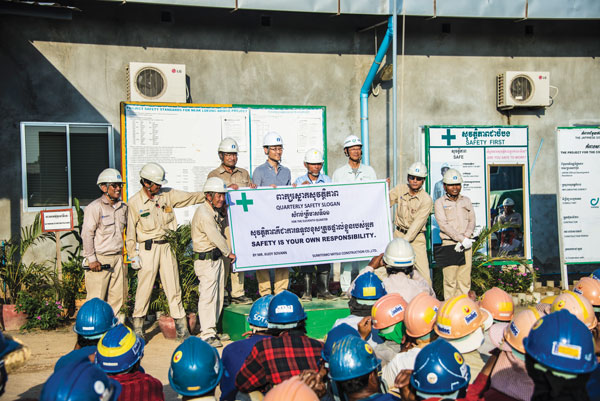Cambodia Secures USD 78.81 Million in New Concessional Loans to Boost Economic Growth
In the first quarter of 2025, the Government of Cambodia successfully signed new concessional loans amounting to USD 78.81 million (equivalent to SDR 59.11 million). This funding represents 3% of the total borrowing ceiling allowed under national law, which stands at SDR 2,000 million. According to a report from the Ministry of Economy and Finance […]
Vietnamese Investors Show Strong Interest in Cambodia: 150 Companies Ready to Invest
In a significant move to strengthen bilateral economic ties, approximately 150 Vietnamese companies have expressed keen interest in investing in Cambodia. This development was highlighted during a meeting on June 10, 2025, between H.E. Nguyen Minh Vu, the Vietnamese Ambassador to Cambodia, and H.E. Binh Trachhai, the Minister of Planning. Ambassador Nguyen noted that the […]
Cambodia Sees Surge in Investment Activity in Early 2025
In a promising start to 2025, Cambodia has attracted 290 new investment projects, totaling over USD 4 billion in investment capital during the first five months, according to the latest report from the Council for the Development of Cambodia (CDC). Remarkably, this marks a significant increase from the same period last year, with 137 additional […]
Vietnam to Construct Cambodia-Vietnam Friendship Monument to Celebrate Strong Ties
Vietnam has announced an ambitious plan to build a Cambodia-Vietnam Friendship Monument, aimed at honoring the strong bonds of friendship and cooperation between the two nations. This initiative underscores their mutual gratitude and highlights the enduring ties that have existed throughout history. The announcement coincided with a visit from Samdech Akka Moha Sena Padei Techo […]
Germany Reaffirms Commitment to Cambodia’s Infrastructure Development
In a significant milestone marking 32 years of diplomatic relations, Germany has played a pivotal role in enhancing Cambodia’s infrastructure, contributing to the development of over 2,000 kilometers of roadways. This achievement was highlighted during a recent meeting between His Excellency Chhay Rithsen, Cambodia’s Minister of Rural Development, and Mr. Gidon Windecker, a representative of […]
Cambodia Enhances Port Management and Development: A Workshop for Zoning Strategies
In an effort to strengthen administrative management and enhance efficiency across its maritime operations, Cambodia is focusing on its 103 ports. The Ministry of Public Works and Transport is currently developing comprehensive zoning documents as part of the “Capacity Building Project for Port Administration Management.” This initiative was outlined in a recent workshop led […]



 ខ្មែរ
ខ្មែរ







